The classic prepper way to build up a long-term food source is to stockpile bulk staples like rice, pasta and dried beans. This is cost-effective and works well, but it can leave you facing a pretty boring diet. That’s not good for morale, and while well-chosen staples should minimize the risk of malnutrition you’ll quickly find there are things you miss.
What Are Some Essential Foods To Stockpile?
Now for some good news: There’s a whole range of things you can easily add to your stockpile to make it more interesting, tasty and nutritious. Unlike buying rice in 50 pound sacks, you can also build up an emergency reserve by just picking up a couple of extra items every week when you do your regular grocery shopping. Here’s our list of the top 24 foods to hoard:
#1 – Meat
Fresh meat is a non-starter for emergency supplies, because it can’t be stored long-term without a freezer – and you can’t rely on your freezer surviving the apocalypse. It’s worth looking for alternatives though, because meat is the best source of protein. Canned fish, canned hamburger meat, and other preserved meats will last for years, is easy to prepare – in an emergency you can eat it straight out of the tin – and makes pasta or rice dishes a lot more interesting. Jerky is also good – it can be soaked and added to meals, or eaten as a snack.
#2 – Eggs
Eggs are another great source of protein, and they’re very versatile. The trouble is, they’re perishable. In fact you can preserve eggs for between nine months and a year, by coating them in a thin layer of beeswax or baby oil then storing them in a cool, dark place, but there are also some processed egg products that will safely last for years. Freeze-dried egg powders can replace fresh eggs for most uses – baking or scrambled eggs, for example.
#3 – Whey powder
Cheese makers separate curdled milk into curds – the thick part that ends up as cheese – and whey. Fresh whey is a cloudy, watery liquid that’s low in fat but rich in proteins. In fact whey is the base of most protein supplements. Add powdered whey to your food store; it dissolves easily and can be used to make protein-rich drinks, soups and sauces.
#4 –Cheese
If you like cheese, it’s one of those foods you’re really going to miss when it’s gone. Luckily, there are ways to store cheese long-term without refrigeration. Canned processed cheese has a shelf life of at least two years, and usually much longer. Wax-coated cheese will also stay good for years if properly stored – parmesan can last 25 years or more!
#5 – Fats
If you’re following our survival food advice you’ve already stored plenty of oil, to add a basic source of fats to your diet. Supplementing that with some other fats will let you vary tastes and add more energy. Try canned butter, ghee, lard – yes, that turns out to be healthy – and Crisco. Olive oil is good too, but it only lasts a couple of years before going rancid.
#6 – Breakfast cereal
Even in the worst of times, a bowl of your favorite breakfast cereal will get the day off to a familiar, reassuring start. Cereal can also be surprisingly nutritious. Wholegrain-based ones like shredded wheat have a lot of fiber; even popular sugary ones are a great source of energy. Hot oatmeal is a real boost in cold weather.
#7 – Dried milk
You can’t have cereal without milk, so stock up on powdered milk too. It can be stored for several years, and has lots of uses. You’ll usually get the best shelf life – and the best value for money – if you buy #10 cans.
Related: How to Preserve Milk for Years
#8 – Potato flakes
If you have potato flakes and hot water, you can make mashed potatoes. These aren’t just a tasty addition to a meal – they’re also a great source of carbs (which means energy). You can also add potato flakes to stews and soups to add some extra body.
#9 – Potato flour
More potatoes! But then, why not? Potato flour is made from whole potatoes (skin and all), so it’s quite nutritious. It makes a great thickener and you can bake with it, too. Potato flour is also useful if you’re gluten intolerant.
#10 – Cornmeal
Corn has more energy than wheat and more protein than rice. Cornmeal can be stored for two years or more, and you can turn it into cornbread, pancakes, grits or polenta.
#11 – Cider vinegar
Vinegar is practically a magic potion – it has a whole range of uses around the home and in an emergency. Apple cider vinegar tastes great, too; mixed with oil and seasonings it’s a good simple dressing, and it make a huge difference to sauces.
#12 – Chocolate
Compact, long-lasting, loaded with healthy antioxidants and energy dense, dark chocolate is a perfect survival food supplement. It also tastes amazing, which doesn’t hurt. Buy quality chocolate; avoid cheaper brands that contain hydrogenated vegetable oil, which is bad for your heart.
#13 – Baking soda
If you have flour in your stores, or you manage to get some crops coming in and grind your own, you’ll need leavening agents to make bread rise. Baking soda lasts longer than yeast, because it’s a chemical and not a living organism.
#14 – Honey
You probably already have sugar in your stores, but add some honey too. It lasts practically forever, tastes great and contains natural antibiotics – in an emergency you can put it on a would to prevent infection. Cover it with a dressing to stop dirt sticking to it.
Related: 10 Long-Lasting Foods You Can Make From Honey
#15 – Molasses
Like honey, molasses is packed with energy. You can use it for baking, or add a big spoonful to chili or stews.
#16 – Pickling salt
Normal iodized table salt isn’t suitable for canning or pickling – it has too many added chemicals to fortify it or keep it flowing freely. If you plan on preserving your own produce, store the right salt.
#17 – Dried fruit
Raisins, fruit strips and other dried fruit products have most of the nutrients and energy of fresh fruit, but they last for years and don’t take up much space. Avoid over-processed products and stick with all-natural ones. Best of all, if you have a dehydrator and vacuum sealer you can make your own.
#18 – Jelly and jam
If you’re making bread, you’ll want something to put on it. You can also use jelly to make simple puddings – stir a spoonful into a bowl of cooked, sweetened cornmeal for a quick and tasty option.
#19 – Peanut butter
This is also great on bread, with or without jelly, but it can make some great sauces too. You can make a basic satay sauce with peanut butter, sugar and soy sauce; it goes well with chicken.
#20 – Coconut milk
If you like Indian or Thai food, coconut milk is a big help in creating tasty sauces. It has lots of energy, is a good source of healthy fats, and contains several essential nutrients. Like most canned goods, it should last at least two years but is generally fine as long as the can isn’t leaking, rusted or swollen.
#21 – Powdered drink mixes
Staying hydrated is the top survival priority – but drinking plain water for weeks on end gets dull, and some people get nauseated by it. Add variety with hot and cold drink mixes. Hot chocolate and bouillon are excellent in cold weather; Tang or Gatorade are good for cold drinks.
#22 – Seltzer water
Canned seltzer water lasts pretty much forever and adds variety to your drinking routine. It can also help treat constipation.
#23 – Protein bars
If you need to bug out in a hurry you’ll need compact, high-energy food to take with you. Grab your chocolate, but some protein bars are good, too. They’ll make your diet a bit more balanced, and keep your stamina up.
#24 – Seasonings
Whatever you’re eating, the right seasonings will make it a lot more pleasant – and that makes a difference. Weeks of eating bland food is depressing. You should already have salt stockpiled; as well as pepper add some of your favorite herbs and spices – garlic powder, ground paprika, cayenne pepper, chili powder, dried oregano and even a bottle of soy sauce.
Any food that can be safely stored will make a useful addition to your reserves, so keep a lookout for special offers that could have a place on your store shelves. If you have any other suggestions for foods that should be hoarded, join in the comments below!
10 Canning Recipes From The Amish
Add This To Your Stockpile To Increase Its Shelf Life (Video)
DIY Hidden Pantry For Your Kitchen

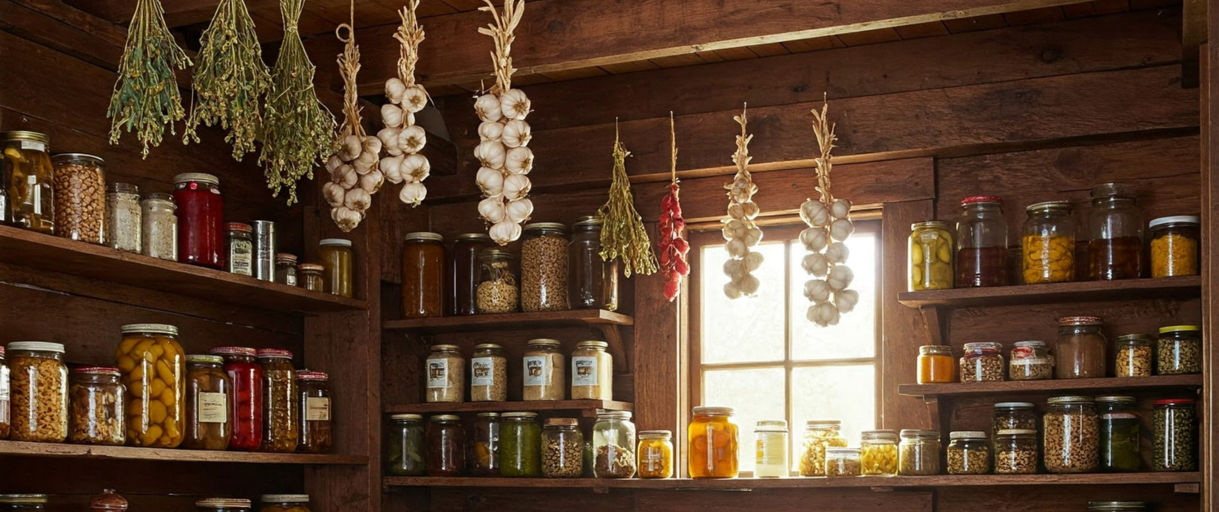
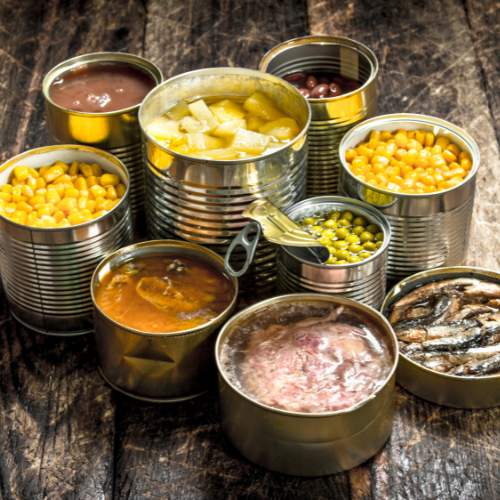
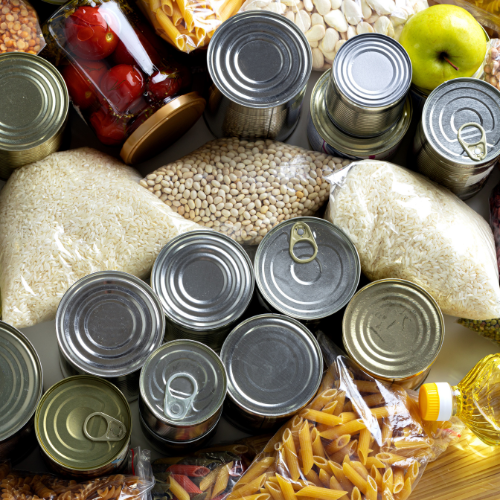
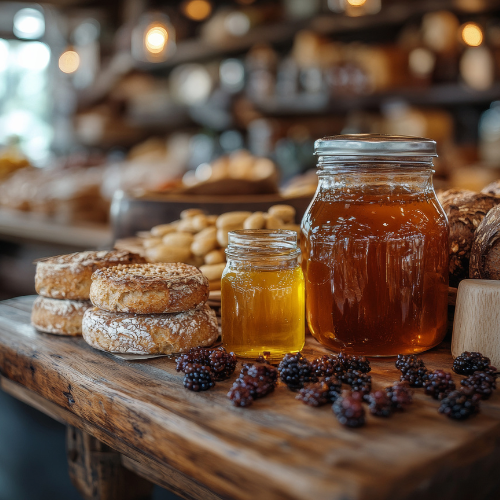
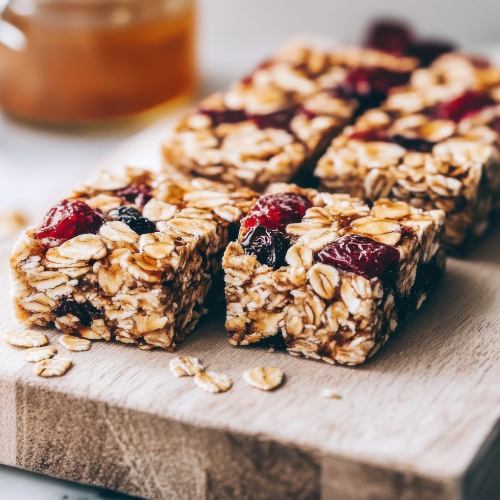









Baking soda can be found at your feed store in 50 pound bags. Food quality, for a mere fraction of what you’d pay if you get the little boxes at the grocery store.